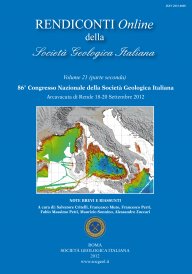
Sea level fluctuation in the Mediterranean after the March 11th, 2011 Japan tsunami from Italian tidal records
Antonio Vecchio (1), Marco Anzidei (1,2), Vincenzo Carbone (1,3), Vincenzo Capparelli (1,4), Ignazio Guerra (1) & Giovanni Arena (5)
(1) Dipartimento di Fisica, Università della Calabria, Rende (CS), Italy.
(2) Istituto Nazionale di Geofisica e Vulcanologia, Roma, Italy.
(3) IPCF-CNR, Università della Calabria, Rende (CS), Italy.
(4) British Antarctic Survey, Natural Environment Research Council, Cambridge, UK.
(5) ISPRA, Roma, Italy.
Volume: 21/2012
Pages: 1196-1197
Abstract
The sea level perturbations generated by the large M 9.0, Tohoku-Oki earthquake of March, 11th, 2011, in the Mediterranean sea, have been investigated by tide gauge data. The tidal records, acquired by 26 stations located along the coast of Italy, managed by ISPRA (Institute for Environmental Protection and Research), have been analyzed through the Empirical Mode Decomposition. After an inverse barometric correction was applied and considered the effects of wind velocity and direction at the tidal stations, we found that the abrupt changes in amplitude and frequency of the tide, which lasted for several hours, were caused by the arrival of the perturbations at the recording stations, approximately 40-50 hours after the main shock and about 13 hours after its arrival at Gibraltar, namely about 45 hours after the origin time of the earthquake. In particular, this tsunami caused two main effects in the Mediterranean: the generation of frequency fluctuations, that destabilized the diurnal and semidiurnal constituents and a temporary variation of the sea level with a maximum amplitude of ~10 cm, demonstrating that this particular tsunami was a truly global event.
Keywords
Get Full Text